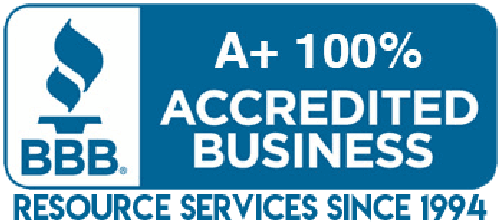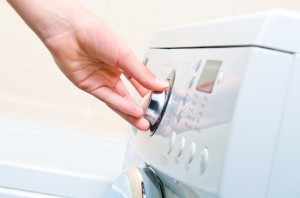It’s starting to warm up here in Des Moines, IA and yesterday while driving home from work I saw several of my neighbors with laundry out on their clothes lines. While drying your clothes on a line may add to your chore list a bit it saves on the energy cost of drying your clothes in a clothes dryer. It got me thinking about what other ways we can save money while doing laundry so I started researching and I certainly found some great tips.
7 TIPS FOR WASHING:
1) Use Vinegar for Fabric Softener
Not only will vinegar remove any smells from your clothing, it will also make your clothes soft and fluffy. It also has the added benefit of cleaning the inside of your washer. It’s inexpensive and you don’t need much at all, about a capful.
2) Use Less detergent
Liquid detergent really goes a long way. This may vary from brand, so you’ll need to experiment. Instead of following the instructions on the bottle try using a little less with each load until you get to the least amount you can use and still get your clothes clean. Generally this ends up being about ¼ cup. I always loose the little cap so I’ve found for most of my clothes pressing the button to the count of 5 is plenty.
3) Make your own detergent.
This has the added benefit of being better for the environment and non-toxic. It’s also less expensive. There’s a lot of recipes out there but a friend suggested this one:
1-1/2 c Baking Soda
1-1/2 c Washing Soda
½ c Epsom Salt
2 Tbsp. Salt
Couple Drops of Essential Oil for fragrance (optional)
Combine all ingredients in a food processor. Store in a container or jar. Use 1-2 Tbsp. per load.
Note: When using powdered laundry detergent it’s best to let the water in the washer run for a minute and add the soap directly to the water. Then add your clothes.
4) Wash in cold water
The majority of the energy costs for doing laundry comes from the energy used to heat the water. Try only using hot or warm water for undergarments or kitchen towels, things that need bacteria killed.
5) Wash only full loads (but don’t overload)
Your washer uses the same amount of energy regardless of the size of the load. So running a small load is actually less cost effective then if you were to wait until you had a full load.
6) Use the shortest cycle
Unless your clothes are covered in mud or really dirty you probably don’t need to wash them on the heavy duty cycle. Generally using the light or medium cycle will be plenty to get your clothes cleaned. Also, don’t run the extra rinse cycle unless you need to.
7) Separate the heavy from the light.
Washing and drying lighter weight items doesn’t take as long as the heavier items. If you separate your towels and heavier cottons from your lighter weight clothes your dryer will work more efficiently. This also has an added benefit. Towels and heavier cottons tend to be made of more abrasive materials. When a towel rubs against a softer material it creates peeling and more lint. So washing and drying them separately will make your clothes last longer.
7 TIPS FOR DRYING
1) Don’t use the dryer.
If the weather is nice and you have the space, hanging up your clothes on a drying rack or clothes line may be a great option. Of course it takes longer and more of your time but it does save you on the energy costs of running the dryer.
2) Shake out your clothes.
When you transfer items from the washer to the dryer shake them out first. A traditional clothes dryer rotates or tumbles your clothes while an electric or gas powered heater heats air that in turn heats the water in your clothes. The water becomes moist air which is then sucked out of the dryer through the dryer vent. Shaking out your clothes gives the air more surface area for the warm air to pass through. They’ll dry faster and won’t come out as wrinkled, especially if you can take them out of the dryer as soon as it’s finished and hang them.
3) Clean the lint trap.
Clean the lint trap every time you run your dryer it increases air circulation and also prevents a fire hazard. I also recommend using your vacuum with the long hose extension to suck out the lint that builds up in the trap slot.
4) Adjust the settings.
If your dryer has a moisture sensing or auto dry setting use it instead of a timed dry. Also try lowering the heat level. I’ve found that loads with lighter weight clothes dry perfectly well at the medium heat setting.
5) Remove obstructions and clean your dryer vent.
About twice a year find the exterior dryer vent on the outside of your house and make sure it’s clear and clean. Also check the dryer vent hose behind your dryer. Lint particles often build up and make it harder for your dryer to push that moist air out.
6) Remove clothes while still damp.
If you take items out of the dryer while they are still a little damp it can make it easier to iron them. Also hanging them to finish air drying will also decrease the amount of wrinkles.
7) Shorten your dryer vent hose.
The shorter and more unobstructed your dryer vent hose the less your dryer has to work to push that moist air to the outside. The goal is to make it the most direct route possible with no kinks and avoid creating areas that would catch and allow lint to build up. For further instructions click here.



